Spanish Class, Engaged Communication, Café y Conversación
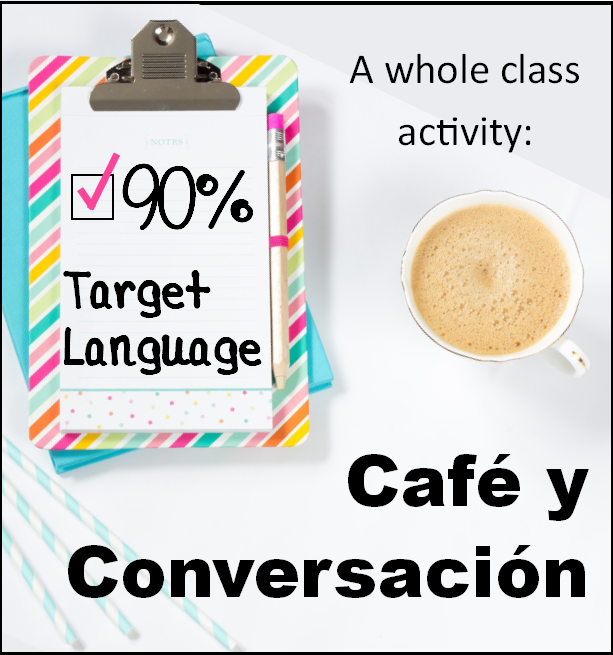
A whole class communicative activity for your World Language Classes
A guest blog post from teacher Kim Huegerich. When I read about Kim’s Café y Conversación idea in a FB group, I knew I needed to reach out and ask her to share this idea with my readers!
Read about Kim’s awesome whole class communicative activity and learn how you can implement it in your world language classroom!
Thank you, Kim for being willing to write a guest blog post and share your fantastic teaching ideas with us!
Café y conversación
by guest blogger Kim Huegerich
When reflecting on our own personal language studies, what is the number one activity that helped us learn the most? Of course: speaking and living in the native environment. So, isn’t it logical that we try to bring that to our students who can’t or won’t travel abroad? or at minimum simulate this environment?
Why?
Why should you implement a “Café y Conversación” day in your classes?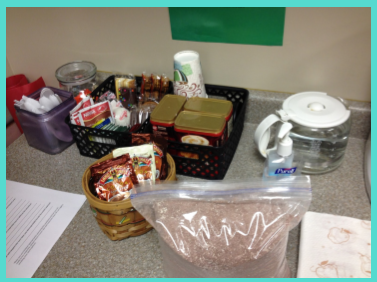
I find random conversation one way to help hook students into learning.
When we have authentic conversation about topics that students want to talk about, they ask better questions and learn at a higher level.
This is why it is so important to put students in this situation. When they will need to use the skills we are teaching them, it will likely be speaking first. Culturally, Hispanics love to talk; they will sit around at lunch for a couple hours and just socialize, they will meet someone new and talk for an extended amount of time. This creates a perfect bonding time for the students to create their own culture and safe place in class.
When?
When can you work a “Café y Conversación” day into your schedule?
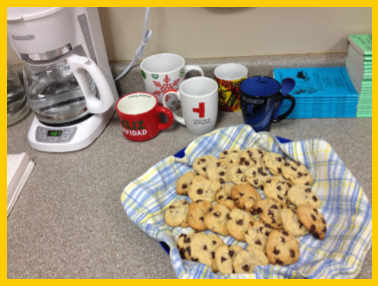 Living in the midwest, we see days that Mother Nature wreaks havoc on our roads so school is delayed or cancelled. These are obviously not planned so all of a sudden our schedule is interrupted and lesson plans need to be changed. This is when I call a “Día de Chocolate”.
Living in the midwest, we see days that Mother Nature wreaks havoc on our roads so school is delayed or cancelled. These are obviously not planned so all of a sudden our schedule is interrupted and lesson plans need to be changed. This is when I call a “Día de Chocolate”.
P reparation
reparation
What materials will you need in your classroom to be ready?
My room is always supplied with cocoa (complete with marshmallows), cappuccino, tea, and cider. There is also a coffee pot that has only ever seen water. I replenish the supplies as needed and on our Días de Chocolate, I will bring in cookies, cinnamon rolls, bars, or some other treat as well. Often times students will bring in treats. Due to many schools having treat policies, the students usually bring in prepackaged treats, but I accept any treats anyone wants to make. This year I do have a couple students who are on a gluten-free diet so I prepare an alternative. The students choose to eat/drink; I never force or require anything.
Notification
How do you notify students to be ready for a conversation day?
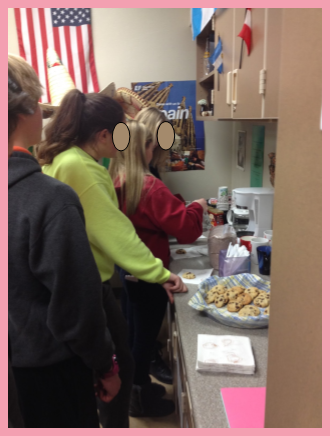 I am also an avid weather watcher so I know days ahead if there is weather coming. I will warn students if it’s obvious that there may be a late start. “Yeah, guys I hear tomorrow there is bad weather coming. Remember if we have a late start, it’s a Hot Chocolate Day! This means you have to bring a mug and be willing to chat.” When the call is made from the superintendent and/or we see it on TV, I send out a message to the students that it is officially a “Día de Chocolate”.
I am also an avid weather watcher so I know days ahead if there is weather coming. I will warn students if it’s obvious that there may be a late start. “Yeah, guys I hear tomorrow there is bad weather coming. Remember if we have a late start, it’s a Hot Chocolate Day! This means you have to bring a mug and be willing to chat.” When the call is made from the superintendent and/or we see it on TV, I send out a message to the students that it is officially a “Día de Chocolate”.
Hot Cocoa Day
What can I expect from a conversation day?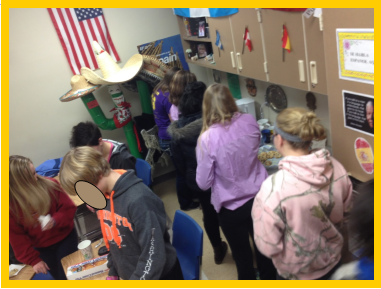
Most students do indeed bring their mug, but I do have a small selection of mugs for students to use as long as they wash it and return it before the end of class. Upon entering, I remind them that it’s Hot Cocoa Day so they go to the counter, sanitize their hands, and prepare their beverage and snack. The desks are arranged in a circle to be more conducive to conversation. I will start the conversation off with small talk about what they did this morning with their extra two hours, how the drive in was, what they saw (cars in the ditch, etc), and other particular details of their morning. Once you get them talking, they will bring up other topics and the conversation continues throughout the class period. Some groups are more chatty than others, but I have never had a group that would just sit there and say nothing. The culture is created on day one that the expectation is 100% Spanish. They know that in order to improve their skills, they need to speak the language.
Reflection
How do students feel about the Hot Cocoa day?
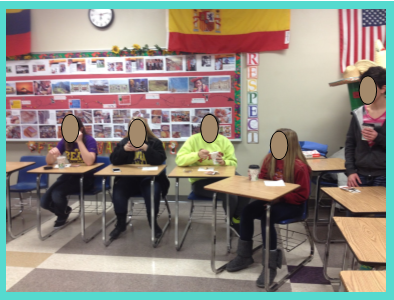 In an end-of-the-course evaluation, these were a handful of the comments I received from students about what they enjoyed the most about the class.
In an end-of-the-course evaluation, these were a handful of the comments I received from students about what they enjoyed the most about the class.
“Keep the same open environment. I was never embarrassed to say an announcement or talk out loud in class because I knew that she would help me if I needed it.”
“She should keep having hot chocolate days and bringing in treats!”
“To apply food into the class it makes learning delicious.”
“I liked that your teaching style was less serious but still made us get the work done that we needed to so that mind set was nice.”
“When we got in a circle and just talked in Spanish for the whole day.”
“I can’t think of a favorite because I liked almost everything we did in this class. I enjoyed listening to the songs, reading the books, learning tons of new vocab and eating chocolate and having fun.”
“The locked box game or having hot chocolate days and talking.”
Wow, right?? What an amazing teaching concept, beautifully orchestrated into a normal teaching routine so students know what to expect and feel comfortable and confident speaking in the Target Language!
Thank you again, Kim for being willing to share this great teaching strategy for foreign language teachers! You can read Kim’s blog post on her blog, The Active Learner.


Hi there! This is a great idea. Thank you both so much for sharing with us. I teach middle school, and would love to start this. I’m guilty of not making them speak Spanish as much as I’d like to and I want to make it fun when we kick it off. So this is perfect, though I’m in the South and we don’t have many delays.
Do you have one big whole group circle conversation or smaller groups or partners? Or do you suggest starting as a big group the first few times and then you could always start making it small groups and partners as the kids grew more comfortable? Recommendations?
Hola y Bienvenida!
I think the biggest question for you as you begin to implement this is: How capable are your middle school students in the TL right now? Are they very new (Spanish 1 of this year?) or are they more advanced (Spanish 2 or 3?)? I think this could help you determine a time limit for the experience. A group of newbie speakers may only be able to handle a shorter amount of time, while a more advanced group can definitely handle a full class period (they may feel resistance, but they can handle it!). Depending on the comfort level of your students, I would personally suggest smaller groups over a whole class discussion. Remember- this can (and should) be a very relaxed environment (pressure to speak in front of the whole group would have shut down my affective filter in an instant when I was in high school!). Allow students to mingle, but remind them that speaking in the TL is the goal. I would even suggest having a point system to help students stay focused on their TL goal. (CLICK HERE to get a FREE tool to help remind your students to stay in the TL.)
In either case, set your students up for success by explaining step by step in advance what will happen and what your expectations are. Starting in a big group and modeling, like Kim suggested above, is a great way to start the lesson (once everyone has their cocoa, etc.).
I hope you give it a try! Please come back and let us know how it goes! And if you have any suggestions after trying it out!
Thanks for your comment!
@Kayduffie Thanks for your question! I think la profa Frida nailed it. You know your students best and what they can handle and what is appropriate in the culture of your class and building. My experience is that lower level students don’t, can’t or won’t naturally challenge themselves to do this type of activity. However, it could be framed in such a way that they will excel in this.
For my lower level students I use anuncios to scaffold them into this activity. I also tell them this is a challenge for them and want to see how far they can take this. We see how many announcements they can make before we actually start our lesson. I also use this to help them problem solve in the language. For example, a student doesn’t know how to say “I feed my horse hay every morning for breakfast.” But…they do know how to say, “My horse eats at 7:30 in the morning.” So, this is a great activity to get them to think outside the box, use their vocabulary base, and rethink how to say their ideas.
For anuncios, I also tell them that if they continue speaking in TL the entire class period I will throw out the lesson that day. This is usually enough of “carrot” for them to accept the challenge. They can’t maintain this every day, but I love how they take on the challenge. It really makes them think. After a few weeks of doing this, the quiet, non-participatory kids will eventually speak up. You then cheerlead their answers and put them on a pedestal for a moment. The momentum has started! By level 2 they will speak about half of the period. By 3 they can maintain the whole class. By level 4 you really don’t have to say anything during the conversation because they are so independent in their conversation.
The big thing is always keeping in mind where you want them when they walk out of the highest level of language and keep pushing them in that direction, refining skills as you go.
I’m just curious about the number of students you have in each class. I have 34-37 high schoolers with traditional desks. I would love to do this but can’t imagine keeping all of them on task
I have 20-26 students per class this year. Indeed, it is much easier keeping students on task with this with smaller class sizes. However, my suggestion for you would be to circulate amongst your students and hold them accountable for speaking in Spanish with the “Stay On Task Strips.” Buena suerte! 🙂